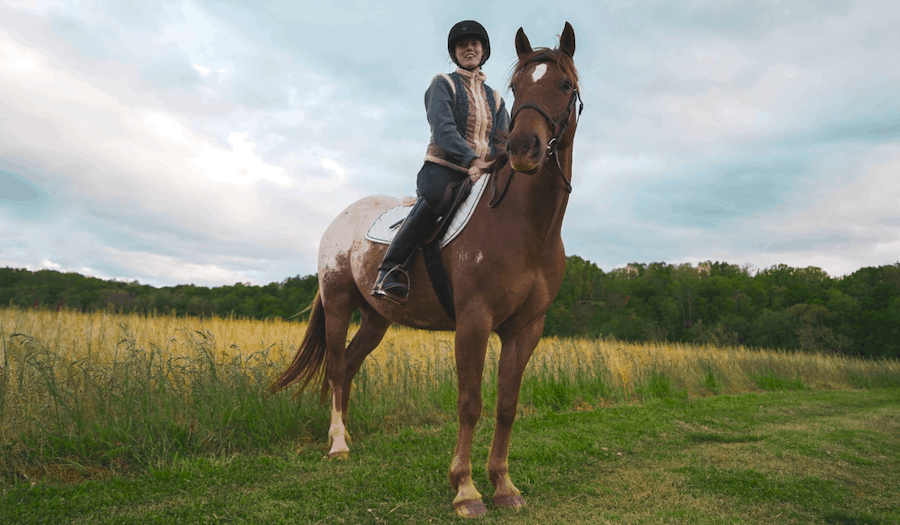If you have done even basic research into the demands of horse ownership, you likely know there is a long list of items you should prepare to facilitate their care, such as grooming, comfort, and riding them.
Given the high cost of some of these items, it is good to consult with the seller of the horse to find out if any equipment is part of the deal when buying your first horse. More so if the person is selling all their horse-related paraphernalia alongside the horse. Some items are also universal, while others may require you to wait for your horse to arrive so you can get a custom fit. Here is a basic rundown of items you may need to check off as you develop a shopping list for what else is required.
Feeding
Your first consideration should be how you will take care of feeding your horse. You will need such items as:
- Feed pan
- Feed container to hold your stock of feed. (Should have a secure lid to prevent pests from getting in.)
- Water trough or bucket
Stabling or Pasture
If stabling your horse, you will need to provide some bedding, besides stocking up on some weeks’ worth of hay and setting up a water source. Even if your horse is of a breed that can remain outdoors in the pasture throughout the year, it is still advisable to provide some shelter they can retreat to when the weather worsens or if they feel sick. Having a stable can also help should you need to separate a horse from others due to bullying, breeding, or trying to control their diet.
If you lack a barn to use for stabling, you can opt for corral shelters. These structures provide shaded areas where horses can take cover when the weather is too hot. They are portable, meaning that the property owner can relocate them where needed easily. You can even use them as a storage space for hay and feed.
If repurposing buckets or barrels for water and feed, ensure they are thoroughly cleaned and that no toxic substances were initially kept in them. Also, ensure that they do not have sharp edges that could harm your horse. Consider equipping your stable with a box fan to help provide a cool breeze during hotter months.
Barn and Pasture Maintenance
Just as you work on keeping your horse groomed, you will also want to keep their living situation tidy. Some of the yard tools you will need for this will include:
- Wheelbarrow
- Stable broom
- Pitchfork
- Manure fork
Grooming Kit
A grooming kit should provide everything you need to keep your horse looking clean and presentable. Grooming should be done daily, not just for sanitary reasons but also to keep track of the condition of your horse. If the horse has any injuries, soreness, or other physical problem, you can often tell if you regularly groom them. Some of the basics to have in your kit include:
- Stiff brushes
- Curry combs
- Mane and tail combs
- Hoof picks
- Cloth
- Lead ropes and halter. (To help with taking control, leading, and tying off your horse when needed.)
- Fly repellent
- Sweat scrapers
Training Equipment
Some of the basic items you will need when training a horse will include:
- Lead Ropes – You need a long lead rope for training. This should allow you to maneuver your horse around you and practice lunging and driving. You can also throw it over the horse for desensitization training.
- Rope Halter- This is a durable halter purposely made from rope and knotted strategically to rest on pressure points on the horse’s face. Manipulating these pressure points helps in communication during training.
- Lunge Whip – This gear is used for communicating with the horse, desensitization, and lunging. Note that just because it is a whip, it should never be used for punishing the horse.
- Round Pen – This pen creates a controlled environment in which to encourage your horse to move along in a circular pattern while being able to keep an eye on their trainer. You can build this using different kinds of fencing or paneling. It should be built with a minimum diameter of 50 feet.
Riding Products
Before you get your horse, you need to have the necessary tack. This includes the saddle, saddle pad, bridle and bit, and stirrups. There are different variations of tack that will depend on such issues as how you want to ride the horse, English or western, for example, and if your horse requires the extra cushioning between the saddle and its back. The activity you bought the horse for, riding or driving, will also dictate your tack. Your goal should be to ensure that you and your horse are as comfortable as possible when riding.
Summer Supplies
Summer is a great time to enjoy riding your horse; however, it also presents new complications in the form of flying pests that can disturb the comfort of your animal. Flies are a common problem in barns. Fly masks can effectively provide a barrier that these pests cannot get past to irritate the eyes and nose of your horse. Some options can also offer UV protection for your horse’s eyes.
Fly sheets can also help prevent pests from getting onto your horse’s skin by covering the bulk of its body. They are made of lightweight and breathable materials that will not be a burden even in the summer heat. You can combine this with a fly spray on your horse’s coat to repel pests.
Winter Supplies
Just as in summer, winter presents its own set of challenges you need to be prepared for. A heated water bucket is essential to avoid your horse struggling with thirst because the water is ice. You will need an electric outlet to connect it.
A horse blanket is also helpful to breeds that do not do well in winter conditions, like Arabians and Berbers. These blankets have some form of insulation that lets the horse better conserve body heat and are often waterproof. A cooler is a thin blanket used to help prevent the horse’s sweat from drying up in cold atmospheres and causing them to become chilled after training or riding.





More Stories
Pet Paradise: Making Small Areas Ideal for Several Pets
Transform your furry friend’s appearance with convenient mobile pet grooming!
Mobile dog grooming ideal for busy pet owners